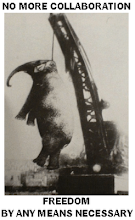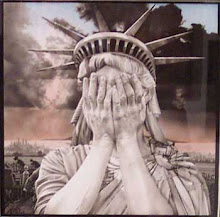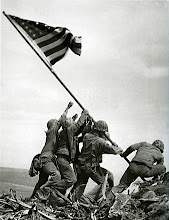Proverbs
18:19
A brother offended is harder to be won than a strong city
Review by:
Robert B. Loring
“Jack Hinson’s
One-Man War,” written by Lieutenant Colonel Tom C. McKenney, USMC (Ret), is the
incredible story of a Southern civilian sniper operating during the American
Civil War. Masterfully told, but difficult to research, LtCol McKenney has
successfully brought to light this poignant tale of a grief-stricken man’s need
for revenge.
Jack Hinson,
who was approaching 60 years old, was a successful farmer near the
Tennessee-Kentucky border and a devoted family man. He was known as one of that
area’s leading citizens, until the “dogs of war” came calling. At first, and as
did many farmers of that tumultuous period, Hinson attempted to stay neutral.
In early winter
1862, Ulysses S. Grant brought his gunboat-supported army to the walls of Fort
Donelson on the Cumberland River. During the following battle Hinson road the
lines and offered his eyewitness intelligence to both armies, and one to Grant
himself. However, his slim-to-none hopes of staying neutral would abruptly
change.
Like many other
communities throughout the contested South, the times of regular combat quickly
turned into irregular guerrilla warfare. Attracting semi-military forces and
countless freebooters, the area residents witnessed innumerable acts of inhuman
cruelty and injustice. Mayhem reigned upon the families living in this once
peaceful and prosperous land.
On one horrific
day a Union cavalry troop appeared at the Hinsons’ door. They had captured two
of Jack’s boys. The boys, caught with hunting rifles, had been taken for
suspected guerrillas and were summarily executed. Identified as Jack’s sons,
the patrol’s lieutenant ordered his sergeant to impale the boys’ decapitated
heads on the Hinsons’ front gateposts.
After the
family buried their children’s remains, Hinson swiftly turned his attention to
exacting terrible vengeance. Hinson freed his slaves, moved his family west,
and carefully oversaw the manufacture of a specially crafted sniper rifle.
Certain that his surviving family was safe, he initiated his highly
personalized war of retribution. McKenney writes, “Whatever the details, the
Federals had sown the wind, and for the rest of the war, they would reap the
whirlwind.”
Hidden deep in Hinson’s Scottish heritage resided the impulse for blood and
retribution. The first person Hinson hunted down was the hated Union
lieutenant; his second kill was the sergeant who seemed to take delight in
impaling the boys’ heads on the family’s gateposts.
Moving freely
throughout the wooded hills, Hinson continued his unique brand of warfare. He
set up a camp at the base of what is now known as “Jack’s Ridge,” overlooking
the northern flowing Tennessee River. There, at a branch known as Towhead
Chute, the Union boats plowed upstream against the current. There, presenting a
near stationary target, Hinson shot the boats’ captains or other officers. As
time passed and his killing reputation grew, he was hunted by the local army
units and a combined Marine/Navy amphibious force.
In one truly
remarkable moment in naval military history, the captain of a transport loaded
with armed soldiers hove to and attempted to surrender. Thinking he’d been
accosted by a swarm of Rebels, the captain beached his boat and rapidly struck
his colors. Alone, with no infantry support, Hinson reluctantly passed on the
offer and quietly faded into the countryside.
The author
writes, “It was the only time in recorded history that a fully armed naval
vessel with embarked combat troops ever surrendered to one man, and it was
probably the shortest period of military confinement after being captured in
combat.”
Late in the
war, Jack acted as a guide for General Nathan Bedford Forrest’s operations in
Tennessee and Kentucky. The author estimates that Hinson, who survived the war,
had killed nearly 100 individuals, including some pro-Southern renegades who
plagued his neighbor. After the war, Hinson presented his trusty sniper rifle
to GEN Forrest. The reader will note that the rifle’s “chain of possession” is
carefully recorded in the appendix of the book.
McKenney spent
15 years researching the legend surrounding Jack Hinson’s unique war
experiences. His research was difficult because Hinson’s surviving family was,
at first, afraid of reprisal, while later descendants wished not to be remembered
as being related to a bushwhacker. The book is a joy to read; whether you’re an
old military trained scout sniper, or a hard-charging Civil War enthusiast,
you’ll be captivated at this skillfully crafted literary masterpiece.


































